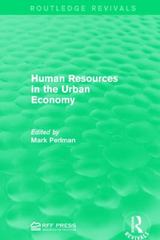Multiple Choice
QUESTION 1 According to economists, equilibrium exists when: output is distributed equitably. scarcity is eliminated. an individual would be better off taking a different action. no individual has an incentive to change his or her behavior. QUESTION 2 A trade-off between equity and efficiency may exist because of all of the following except that: allocating resources fairly may cause efficiency an efficient allocation of resources may lead to an outcome that most people consider unfair. policies that promote equity often come at a cost of decreased efficiency. allocating resources fairly may cause inefficiency. QUESTION 3 All children have to be immunized against polio, measles, mumps, and other diseases. If you don't have enough money to pay for the immunizations, they will be provided free at the county health clinic. This statement best represents this economic concept People usually exploit opportunities to make themselves better off. Resources should be used as efficiently as possible to achieve society's goals. When markets don't achieve efficiency, government intervention can improve society's welfare. Government policies can change spending. QUESTION 4 During the Great Depression, consumers and producers in the United States dramatically reduced their spending as compared to the quantity of goods and services available at the time. This statement best represents this economic concept: Resources are scarce. When markets don't achieve efficiency, government intervention can improve society's welfare. Overall spending sometimes gets out of line with the economy's productive capacity. Government policies can change spending.QUESTION 5 Economists say an economy is efcient when: 7'; the problem of scarcity is eliminated. 7'; output is distributed equitably. 7'; all opportunities to make some people better off without making other people worse off have been taken. 7', all opportunities to make some people worse offwithout making other people better off have been taken. QUESTION 6 An ambiguous change in price and a decrease in quantity are most likely caused by: 7'; no shift in supply and a shift to the left in demand. 7'; a shift to the left in supply and a shift to the left in demand. 7'; a shift to the right in supply and a shift to the left in demand. 7'; a shift to the left in supply and a shift to the right in demand. QUESTION 7 Assume that corn is an input in the production of beef but not in the production of pork. Further, beefand pork are substitutes. A decrease in the price of corn will: 7'; increase the supply of beef and increase the demand for pork. 7'; decrease the supply of beefand increase the demand for pork. 7'; decrease the supply of beefand decrease the demand for pork. 7'; increase the supply of beef and decrease the demand for pork. QUESTION 8 A consumer's willingness to pay depends on 77 the cost of producing the good or service. 7'; the benet that he or she expects to receive from consuming the good or service. 7? the size of the shortage of the good or service. 7'; the size of the surplus of the good or service








